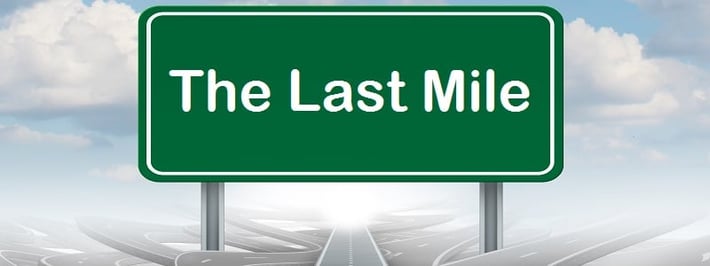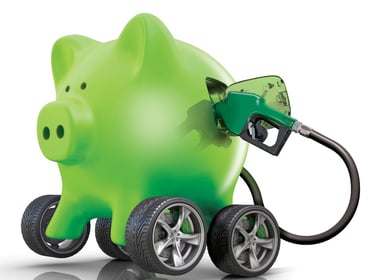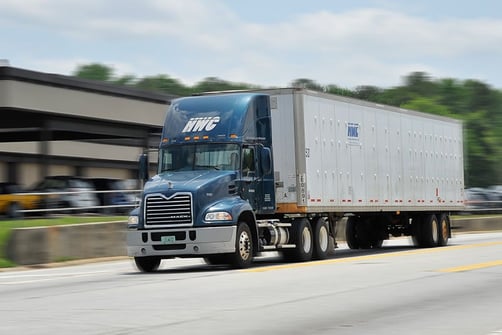REDWOOD LOGIN
Redwood PortalLTL
SCS
SCS Support
Rockfarm
How well is your company performing in the last mile?
The last mile is the last leg of transportation that delivers a package to the customer’s door. It’s often the most expensive and intricate portion of the trip—but it’s also the most important for service and analytics.
You want to deliver impeccable service in the last mile in order to delight the customer. If you’re a business owner, you need to talk to your 3PL or transportation provider about the costs and experience in the last mile.
Streamlined and efficient last mile processes can differentiate your business, improve customer loyalty, and reduce shipping costs.
So how do you know if your last mile is efficient?
You must track your last mile metrics. But tracking metrics for the last mile isn’t simple since there are so many related variables. The cost depends on utilization, driver, service time, capacity, fuel, and even traffic. Below we’ll go through the different last mile metrics you should be tracking in order to account for these factors.

How many deliveries were made by the promise date?
This is critical for customer service, especially in today’s e-commerce world. If a customer is promised their package by Thursday, they want it by Thursday. If they don’t get it by Thursday, they get frustrated with both the shipper and the brand from which they purchased.
Tracking the number of on-time deliveries tells you how your shipping process is doing overall. What does the route look like? How fast are you able to deliver? Are you delivering on your shipping promises?
You can measure this metric with tracking technology. After a driver delivers a box, he should mark it as “Delivered” with the time and date (and signature, if applicable). Does the date of delivery match the time promised to the customer?
Figure out this metric by dividing the number of on-time deliveries by the total number of deliveries. You should do this weekly, monthly, quarterly, and annually.
For example, in one week you have 70 on-time deliveries and 80 total deliveries. You have about an 87.5% on-time delivery rate. 100% delivery is ideal for optimal customer service, but over 80% is acceptable.
 How much fuel are you consuming in the last mile?
How much fuel are you consuming in the last mile?
Looking at fuel consumption is critical to understanding the costs of your last mile. Moreover, it can help you better recognize how much fuel is wasted with stops, service time, and routes.
Fuel consumption especially helps with better route planning. If you are expending a significant amount of fuel for a given route, you may want to consider figuring out a means for improved efficiency along that route.
Be sure to look at both the macro and micro level of consumption. Overall, how are you doing with fuel in the last mile? Specifically, how much fuel is expended by driver and route? Look at the average total fuel costs per driver, per vehicle, per route, and per stops.
Be sure to balance the costs of fuel with capacity utilization. For example, you may be expending a significant amount of fuel on a single route—but that route has 5 more stops than the other routes.
Fuel consumption is a starting point to understand how efficient the last mile is in general.
Along with fuel consumption, consider the mileage being driven. How many miles are on each route? How does this influence your fuel consumption and routing?
If you have a high actual mileage rate, you likely have problems with route planning or frequent delays and detours.
Divide the actual mileage per vehicle, driver, or route by the planned mileage. For example, a driver went 80 miles of the planned 70. This means that they drove an increase of 14% to plan. This increase shows that routes and driver behaviors should be reevaluated. The route may have delays or detours, or the driver is not taking the shortest route for some reason.
The capacity utilization tells you how much empty space you’re wasting on your truck.
Excess available capacity signals inefficiencies. It may mean you have poor loading procedures, need to consolidate your routes, need to better organize shipments, or you need to add more clients or customers.
A lot of empty space means you’re wasting gas and labor costs. In some cases, though, a low utilization might be alright, like if you are making a few local stops.
Divide the available capacity of the truck by the total capacity.
If you’ve filled up 1500 gal of a total installed capacity of 2000 gal, you have a 75% capacity rate.
You want this number to be as close to 100% as possible to best plan routes and optimize fuel consumption. If it’s less than 80%, you need to reevaluate your efficiencies.
 How many hours are your drivers spending in motion versus stationary? This helps show the performance of drivers. It also impacts the fuel—how much time is spent idling—as well as the ability to get goods delivered on time.
How many hours are your drivers spending in motion versus stationary? This helps show the performance of drivers. It also impacts the fuel—how much time is spent idling—as well as the ability to get goods delivered on time.
Divide the total amount of time drivers spend on the route versus the number of hours in motion.
Say your driver spends 40 hours on the road, with 35 of those hours in motion. This means he is spending 87.5% of his time in motion. He’s highly productive, spending the majority of his time optimizing the route.
If you want a more specific average service time, divide the time spent at all the stops by the total number of deliveries. This tells you the time that it takes for the driver to unload cargo, get signatures, and interact with the customer.
Note that in some cases, it’s okay to have a lower in-motion number. For example, some drivers will interact one-on-one with the clients when they hand over the package. This can add a layer of customer service that’s critical in the last mile. Use hours in-motion as a starting point to understand driver behaviors, but be sure to take into account service opportunities as well.
How many stops does each vehicle make?
This helps monitor fuel costs, route optimization, and time on the road.
Basically, look at the number of stops in comparison to the other metrics: fuel consumption, mileage, capacity, and hours in-motion—how do they all compare? Should you increase or decrease the number of stops for better optimization? Do you need to increase or decrease the distance between stops?
For example, a driver makes two trips. In his first trip, he drives for 20 miles and makes 3 stops. In his second trip, he makes 5 stops in 20 miles. 5 stops in 20 miles is more efficient than 3 stops per 20 miles. However, his time in-motion may actually be less in the 5 stops, because he has to stop to talk to more clients.
The number of stops helps you better understand where your other metrics originate.
How many customer complaints are you receiving? Are they centralized to one location, route, truck, or driver? Why?
This is a critical metric to track. Complaints tell you what your service looks like and where you have room for improvement. What people complain about most is where you need to develop your business.
“Damages” are packages that are usually damaged in transit. In some cases, “damages” can be a product that customer returns and the business damages out as opposed to shipping back.
Damages count as a complete loss for both the shipper and the business for which they’re shipping.
It’s necessary to reduce the number of damages in order to improve the bottom line and enhance customer service.
Calculate this damage rate by dividing the number of damaged claims by the total number of shipments. For example, if you have 5 damages in a week of 100 shipments, you have a damage rate of 2.5%. Damages don’t only hurt the business selling the product; the shipper may also lose out on the cost spent per mile on shipping that item.
Overall, how much are you paying for each mile in the “last mile.” This takes into account driver salary, fuel, and vehicle costs divided by the total distance.
For example, a driver drives 100 miles in a day. He gets paid $100. The fuel cost is $40. The maintenance cost and depreciation value of that vehicle for that trip is $10. The total cost is 100 + 40 + 10 ($150) divided by 100 miles. The cost per mile is $1.50.
The goal is to reduce the cost per mile while still focusing on service and streamlining operations.
Last mile metrics help you streamline your operations and improve the efficiency of your last mile logistics.
What does performance look like overall?
What does performance look like for each driver?
What does performance look like for each route?
How can you improve each metric?
Keep in mind that improving one metric often has a positive effect on the others as well, as transport optimization is relational.
Are you looking to improve your last mile and optimize your last mile metrics?
You need a 3PL partner proficient in delivering high-quality customer service in an efficient, cost-effective way.
Contact us now to start increasing the efficiency of your business!